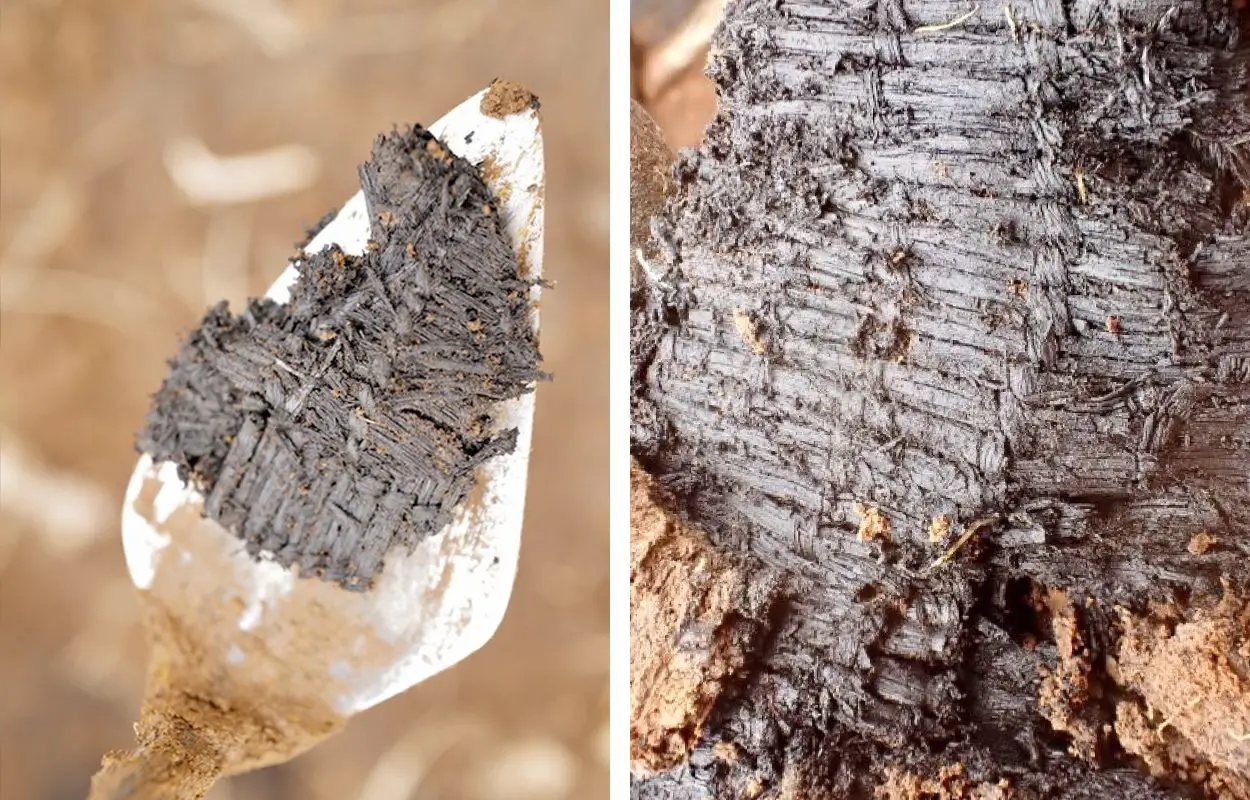Archaeologists uncover 3,000-year-old ancient weavings in Alaska

In a press announcement by the Alutiiq Museum, archaeologists have uncovered fragments of ancient weavings during excavations of an ancestral sod house on Kodiak Island, Alaska.
Weaving is a long-practiced Alutiiq art, but one that is difficult to document archaeologically as fibre artifacts are fragile and rarely preserved.
The sod house was part of a Koniag Alutiiq settlement, a Alutiiq / Sugpiaq people that inhabited the coastal environments of south-central Alaska for over 7,500 years. Their ancestral homelands encompass Prince William Sound, the outer Kenai Peninsula, the Kodiak Archipelago, and the Alaska Peninsula.

The Alutiiq / Sugpiaq people share many cultural traditions in common with other coastal groups, particularly the Unangan / Aleut of the Aleutian Chain, and the Yup’ik of the Bering Sea coast. Anthropologists theorize that these cultural similarities are indicative of a shared ancient ancestry.
The woven fragments were discovered in a sod house on the shores of Karluk Lake. Patrick Saltonstall from the Alutiiq Museum, said: “We were excavating a sod house beside Karluk Lake as part of a broader study to understand how Alutiiq people used Kodiak’s interior.”
Carbon dating indicates that the structure burned and collapsed around 3,000-years-ago, with the walls collapsing into the interior and covering a portion of the floor.

“As we removed the remains of the walls, we were surprised and excited to find fragments of charred weaving. It looks like the house had grass mats on the floor. The pieces covered about a two-metre area at the back of the house, perhaps in an area for sleeping,” said Saltonstall.
A close inspection of the woven fragments shows that their makers laid down long parallel strands of grass (the warp) and then secured them with perpendicular rows of twining (the weft) spaced about an inch apart. This technique created an open weave also found in historic examples of Alutiiq grass matting. Small fragments of more complicated braiding may represent the finished edge of a mat.
“It is likely that our ancestors worked with plant fibres for millennia, from the time they arrived on Kodiak 7500 years ago,” said April Laktonen Counceller, the museum’s executive director. “It makes sense. Plants are abundant and easily harvested, and they are excellent materials for making containers, mats, and other useful items. It’s just very hard to document this practice. This wonderful find extends our knowledge of Alutiiq weaving back an additional 2400 years.”
Related Post
A shocking documentary proves that mermaids do exist
SHOCKING Revelation: Thuya, Mother of Queen Tiye, Was the Grandmother of Akhenaten and Tutankhamun—What Ancient Egyptian Secrets Did She Leave Behind?
Breaking News: Astonishing Discoveries at Karahan Tepe Confirm an Extraterrestrial Civilization is Hiding on Earth, and NO ONE Knows!
Breaking News: Researchers FINALLY Discover U.S. Navy Flight 19 After 75 Years Lost in the Bermuda Triangle!
NASA’s Secret Investigation: Uncovering the Astonishing Mystery of the UFO Crash on the Mountain!
Explosive UFO Docs LEAKED: Startling Proof That Aliens Ruled Ancient Egypt!